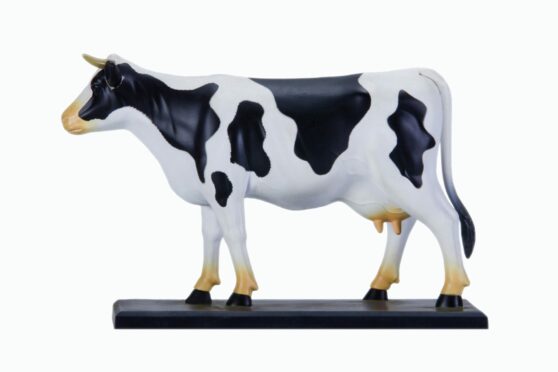
Scientists in Scotland are investigating how to turn cow pats into eco-friendly plastic, paper or even concrete.
At present, cattle manure is used as fertiliser or to produce biogas, a form of green energy.
But researchers at Scotland’s Rural College (SRUC) are now probing the “staggering” variety of applications for cow dung.
These uses include turning manure into “plastic, recycled card and paper, or concrete”.
The study highlights the potential of dung as a source of “nanocellulose”, a raw material that could be used to manufacture biodegradable plastic, as an alternative to using environmentally harmful fossil fuel to make plastics.
“Given the demand for sustainable materials and the ever-increasing interest in nanocellulose research, it is highly likely it will soon be brought out of the lab and into factories and everyday products,” said Vijai Kumar Gupta, a senior research fellow at SRUC.
The researchers have access to their own 400-strong herd of cattle to ensure they have a constant supply of waste for the project.
The study, in collaboration with Edinburgh and Bristol universities, reviewed recent research into the development of high-value, manure-derived materials from ruminant animals such as cattle.
Professor Vijay Kumar Thakur, head of SRUC’s Advanced Materials Research Centre, believes the potential of using dung is enormous. “We have been using manure as a fertiliser for centuries, as far back as the Vikings, and it is also now useful for making biogas,” he said. “But when you extract nanocellulose, it can be used to make anything from biodegradable plastic to recyclable card and paper.
“This has huge potential benefits, helping Scotland reduce our carbon footprint and provide extra income streams for farmers.”
The future of food? Pioneers hail advances in vertical farming
Scotland currently has 1.75 million cattle, with each animal producing up to 65lb (29.5kg) of waste a day, he said, so “we could use the manure to produce biogas while also extracting nanocellulose to make other sustainable materials, even concrete, so the commercial possibilities are considerable”.
“Nanocellulose, in combination with other materials such as polymers, metals and ceramics, has huge potential for use in antibacterial agents, antioxidants, sensors, electromagnetic shielding devices, adsorbents in water treatment, fuel cells, electrochromic, and in biomedical applications.”
Currently, there is a trade-off between the performance of the material and the amount of processing required – limiting its present capacity to replace conventional materials on a commercial level. But the scientists believe by-products of manure will become important in helping to create sustainable materials of the future.
Thakur said there had been much interest in the research from industry and expected progress in exploring ways of scaling up the project before the end of this year.
The National Farmers Union of Scotland said it welcomed new technologies and ground-breaking ideas. It said: “Scotland’s farmers and crofters have a proven track record in innovation and adopting technological breakthroughs.
“While livestock manure is hugely valuable in terms of fertiliser and improving the carbon capturing capacity of soils, alternative uses may be of interest if commercially viable.”
The study is part of a research project by Thomas Harrison, who is carrying out research at SRUC and Edinburgh University to become a doctor of philosophy, and was published by ScienceDirect.

Enjoy the convenience of having The Sunday Post delivered as a digital ePaper straight to your smartphone, tablet or computer.
Subscribe for only £5.49 a month and enjoy all the benefits of the printed paper as a digital replica.
Subscribe